|
|
|
Horses commonly develop a range of hoof distortion, due to a number of causes. Diet and environment are huge factors, which can damage lamellar connections, allow hooves to overgrow, increase susceptability to infections... fail to provide what is needed to develop a strong, functional hoof in the first place. Mechanical factors, such as too much pressure being placed on the walls and too little support under the foot can lead to 'distal descent' as the internal structures 'sink' within the capsule and the sole thins.
Leverage forces on long walls, particularly at the toe cause stretching and separation of the laminae from the ground surface and resulting flares, cracks and infection. Ground parallel or lower angles of the back of P3 cause a 'broken back' pastern angle, putting a lot of stress on both the extensor process(top/front of pedal bone) region and the navicular region.
Alternately, high heels cause 'rotation' of P3 the other way, with the toe pointing into the ground. A horse may have 'clubby' feet for a variety of reasons. One reason is failure of development of the back of the foot, which causes him to be uncomfortable impacting on his heels. Landing toe first naturally wears the toes shorter and allows heels to grow high. Combined with breakdown of lamellar connection due to laminitis &/or failure to manage the toes from flaring with the added pressure, the hoof walls can separate completely. The sole can be flat or even bulging at the tip of P3. In severe cases P3 can even penetrate the sole and in chronic cases the tip of P3 is lost or 'remodelled'.

***
Below; show some examples of 'good' hooves I look after. Not perfect(still somewhat flat soles for eg), but strong and sound on all but the roughest terrain - which is all these horses are booted for.
|
|
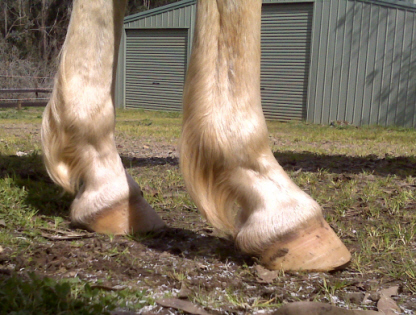 |
|
|
 |
***
Below; a couple of 'before & after' examples. The 'befores' are on top. The first pic shows a neglected pony & the 'after' pictures are immediately after the first trim.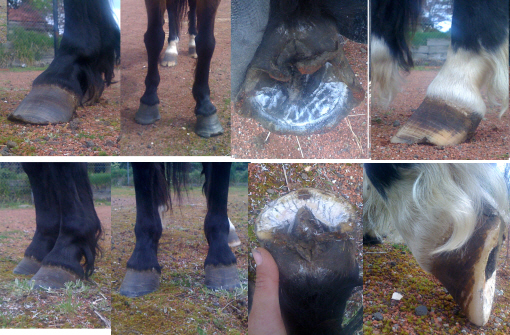
***
The 'after' egs below are around 9 months after. Notice this horse is one who's eg. is now above in my 'good' examples!
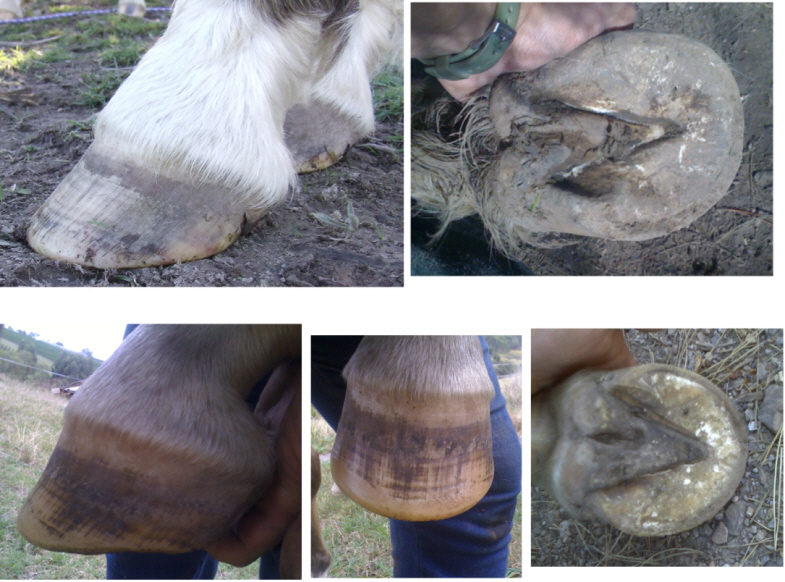
***
Below; the first trim of this poor fella included a saw! Took a fair few months to find the foot under there! Bottom right is the most recent pic. Obviously we're far from there yet...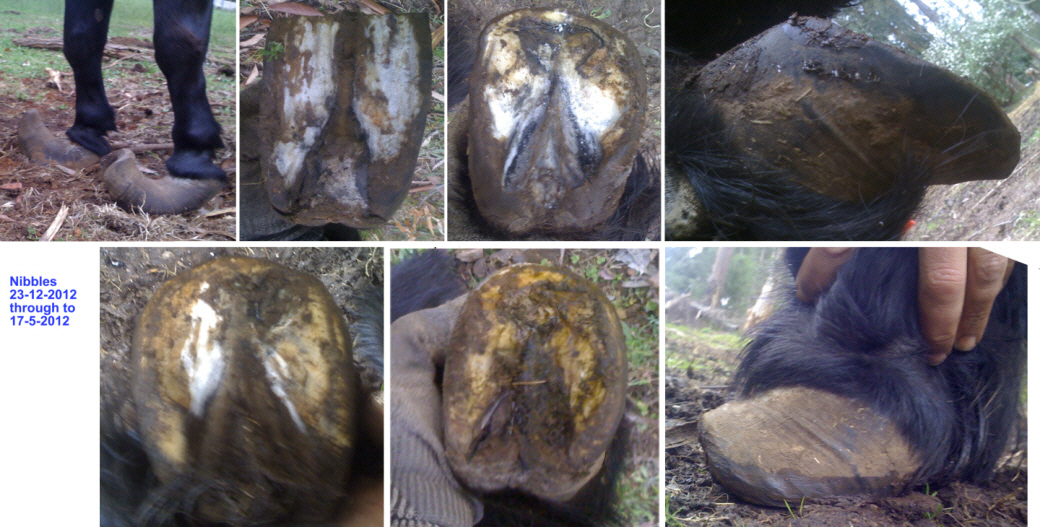
***
***
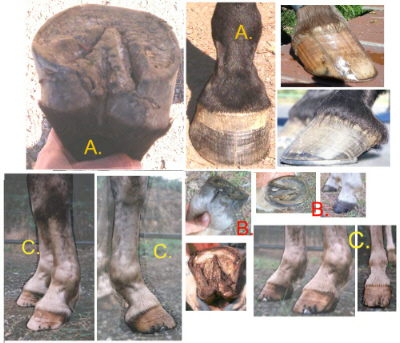
***


His conformation was 'forward at the knee' and his experienced owner could not get him to 'collect'. He used to stumble a lot, especially going down hill. The owner was not comfortable riding her 'clumsy' horse on really rough terrain.
Transformation
Here are the same horse's feet around 1 year after his shoes were removed. The soles are still rather flat but they are healthy feet that stand up to all but the toughest rides.
His conformation has 'come good'. He is no longer forward at the knee and his shoulder angle is much more sloping. He is extremely sure footed.
These pics were taken immediately after a week in the Victorian High Country, which is very rough going. See pic below.

Here is Warlock at Craig's Hut in the High Country of Vicotria. Note the granite. It is a full day's ride on this terrain to get to this hut and back to the campsite, where the owner regularly spends a week riding.
This pic is just prior to the above hoof shots. Warlock still needed Old Mac boots on his front feet for part of this ride.
Nearly 2 years on, the owner reports that she rarely even carries the boots with her on such rides. Also, about a year ago, Warlock suddenly(over only a couple of trims) developed concavity to his soles.